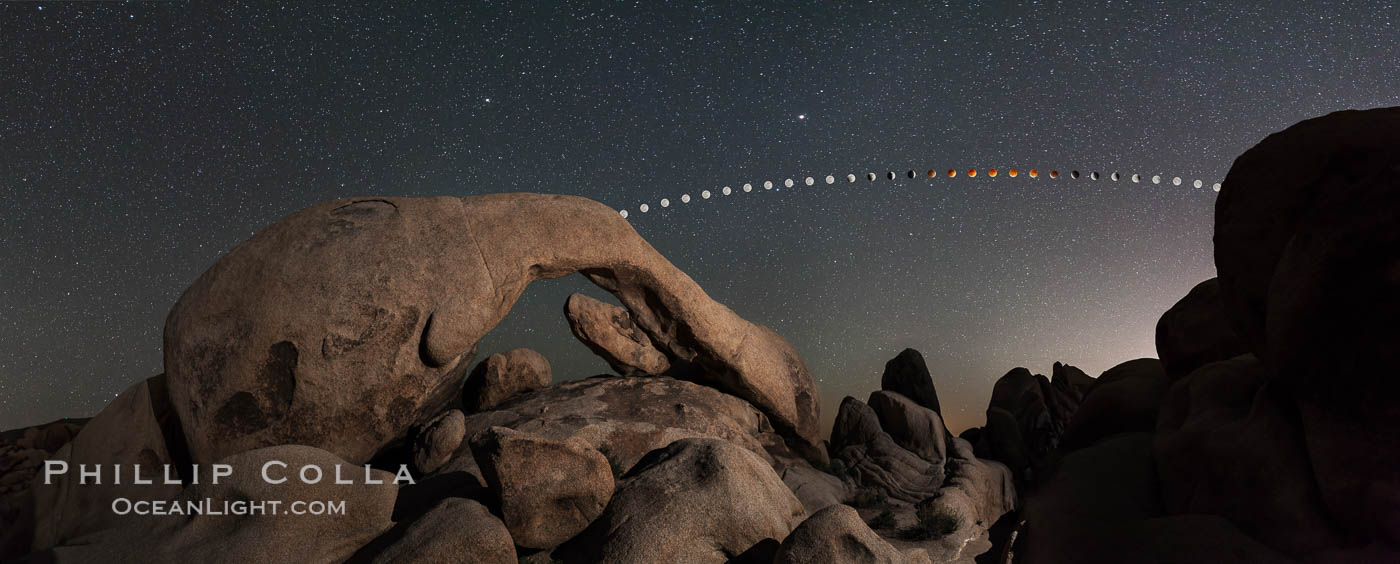The lunar eclipse of April 14 and 15, 2014 was a wonderful event to see. I went up to Joshua Tree National Park to photograph it for two reasons. First, the weather forecast in the high desert was for clear skies and, for the most part, the skies were indeed cloudless and very dark throughout the night. Second, I was fairly sure I could find several locations around the park to setup my cameras (leaving them unattended) and let them record the entire lunar eclipse, from the moment the moon entered the penumbra and began to be shadowed by the Earth until it was full lit again, including the dramatic blood red coloration when the moon is fully eclipsed. The moon was going to be due south of my position at the peak of the eclipse — I knew this thanks to The Photographer’s Ephemeris — so I selected a few locations that offered a nice composition facing due south and shot away. This image depicts the eclipse occuring in stages to the south of the White Tank campground area, with Joshua Tree’s interesting Arch Rock on the east side of the composition. (It follows the first full eclipse sequence I presented a week ago.)
Lunar Eclipse and blood red moon sequence over Arch Rock, planet Mars above the moon, composite image, Joshua Tree National Park, April 14/15 2014.
Image ID: 29201
Note: this image is both a panorama and a composite. The panorama spans over 180 degrees left to right, and is centered roughly SSE. I lit the arch with a remote-triggered tripod mounted flash to the right, hidden behind a rock. The panorama, depicting stars after astronomical twilight but before the full eclipse peaked, is composed of 8 frames. Planet Mars is the brightest “star” above the arc of moon stages and the blue star Spica can be seen just below and to the right of the eight moon image from the left. This image is a composite and the moon is a little larger than it appeared to the eye. The moon was exposed separately from the stars in order to control for the fact it was much brighter than the stars and to better present the detail and color of the moon itself.
Cheers, and thanks for looking!




